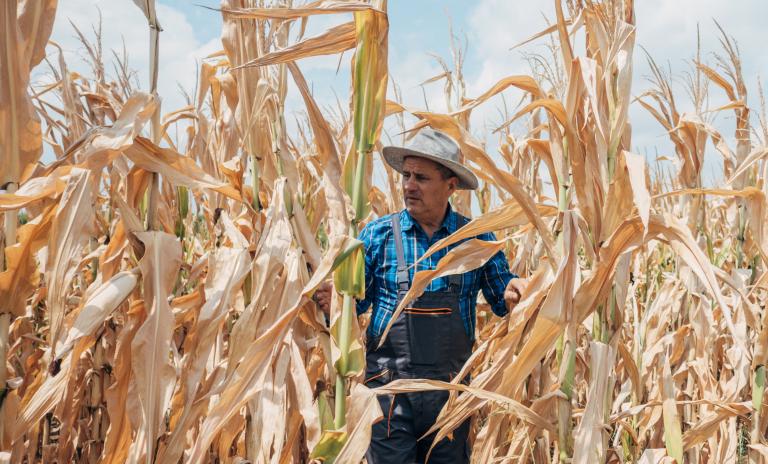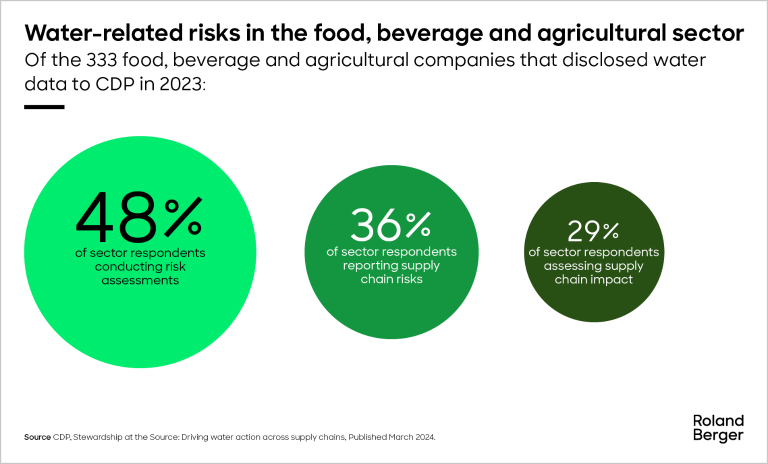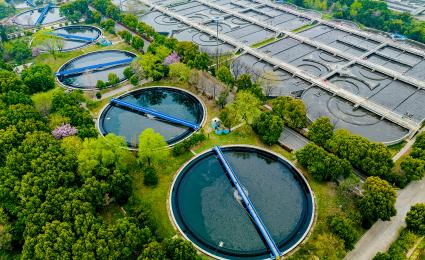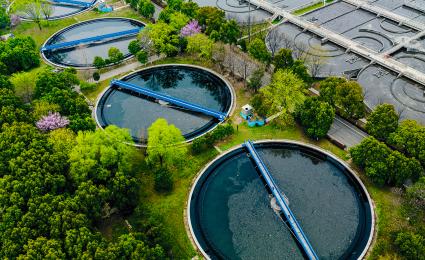How would your business adapt in a scenario where the world has 50% less water? With government leaders taking steps to protect dwindling water resources in the face of climate change and water stress, water is emerging as one of the most important strategic issues of our time.


A thirst for change: Improving water resilience in the food and beverage industry
Exploring water-related risks and opportunities
How would your business cope with only half the water it needs? At the current pace of consumption, many organizations in the food and beverage sector might just find out the hard way. Rapid urban growth and expanding industrial activity are fueling greater demand for water, but in the face of climate change, aging infrastructure, and other stressors, reliable water supplies are increasingly under threat – with experts predicting a 53% shortfall in global water supply by 2050.
This shortfall could unleash a variety of cascading impacts.

"There is a growing need to view and manage water as a shared resource and to look beyond your business’s operational ‘fence’ to consider your impact at the water catchment level."
The food, beverage, and agricultural sector accounts for between 75–80% of water usage worldwide, making it imperative that companies improve water efficiency, increase water reuse, and build resilience to climate change. One positive signal is the growing number of companies disclosing data on water efficiency and risk. In 2023, nearly 5,000 companies across all sectors voluntarily reported to CDP, a global environmental disclosure platform, representing a 23% increase from the previous year. However, as water stress worsens, it’s likely that increased government intervention and new regulations will accelerate this historically ‘opt-in’ approach.
CDP reports 40% of G20+ jurisdictions have introduced, or are in the process of introducing, water-related disclosure requirements. For instance, under the new European Sustainability Reporting Standards (ESRS), thousands of companies operating in the EU are now required to report on a dozen water and environmental topics, covering more than 1,100 data points. These changes reinforce the urgent need for business leaders to ensure they are adequately tracking water-related data and taking effective measures to improve.
Of companies within the food, beverage, and agriculture sectors disclosing to CDP in 2023, fewer than half are conducting risk assessments (48%). Around a third are reporting on risks within their supply chain or assessing the supply chain impact (36% and 29%, respectively). Considering that the 2022 report found 45% of companies say they were withdrawing water from water-stressed areas, and one in five companies reported more than 50% of their facilities were at risk, it’s clear that more significant, end-to-end action is needed.
Building water resilience in the food, beverage, and agricultural sectors
Many food, beverage, and agricultural companies have begun taking steps to reduce their water consumption. These include adopting more efficient technologies in their production processes, switching to lightweight, less water-intensive product packaging, and encouraging responsible water use through marketing campaigns and public commitments.
More forward-thinking businesses have gone a step further; engaging their supply chain on water-related issues, implementing water, sanitation, and hygiene (WASH) initiatives, or investing in conservation projects in water-scarce regions. On the whole, however, most of these initiatives are focused ‘inside the fence.’ This narrow approach to water risk may limit companies’ ability to grow in the long term, particularly within the context of climate change.
There is a growing need to view and manage water as a shared resource and to look beyond your business’s operational ‘fence’ to consider your impact at the water catchment level. This involves understanding and addressing the needs and risks of the specific water basin(s) on which the business operates or relies – as opposed to seeking to solve an internal business or operational challenge.
For many leaders, this means deliberately shifting from a company-centric perspective to one that is basin- or system-centric. It also means focusing efforts on collaborating with diverse stakeholders, including private companies, the public sector, and civil society, to address water security, support the regeneration of water resources, and promote biodiversity.
Roland Berger can help. Our dedicated water team encourages and supports companies in taking a more holistic approach that better captures the dynamic nature of water and the variety of potential impacts water may have on a business’s long-term success.
1. Understand your potential water risks
The first step in this process is to obtain a clear understanding of nature, the severity of your water risk at a global level, and its potential impact on your bottom line. Specifically, you want to be able to assess water availability in terms of quantity and quality within the context of your current business operations and production sites, as well as your projected water requirements and availability.
For many, the goal will be to identify your highest priority sites; namely your operational, production, and sourcing areas that may be facing the most acute water stress and generate a high-level estimate of the economic risk faced, both per site and in total. This may include evaluating the vulnerability of the operations to climate change impacts, conducting hydrological studies, and implementing early warning systems for floods or other extreme weather events. It may also be necessary to consider the water risk for entire watersheds, catchment areas, or basins which are connected to your operational site(s) and to actively identify water-related opportunities to make a positive social and environmental impact in those same ‘at risk’ localities.
With a firm understanding of these and other factors, a ‘risk matrix’ begins to emerge, providing an overview of the likelihood, impact, and velocity of water risks you may encounter – whether they include physical risks such as flooding, operational or regulatory risks, or other brand and reputational risks. This process will also enable you to benchmark your risk level against that of competitors.
2. Develop tailored solutions for both supply and demand
There are a wide variety of mitigation measures that could be considered or prioritized within the food, beverage, and agricultural sectors, depending on the location, the scale of your operations, and the regulatory environment. Another important factor is the level to which the business must mitigate potential food safety and product quality risks. However, by assessing their unique water risk profile, companies can then develop tailored strategies to address the challenges they face.
At a high level, strategies may include:
Supply-side strategies: Focused on increasing the availability of water or reducing the demand for water, such as:
- Water conservation: includes measures to reduce water consumption, such as designing products that are less water-intensive.
- Water storage: includes building dams and reservoirs to store water during wet periods for use during dry periods.
- Water desalination: involves removing salt from seawater to make it fresh.
- Water recycling and reuse: involves treating wastewater so that it can be reused for irrigation or other non-potable purposes.
Demand-side strategies: Focused on using water more efficiently or reducing the vulnerability of people and infrastructure to water risks, such as:
- Water efficiency: includes measures such as using more efficient irrigation systems, appliances, and plumbing fixtures.
- Drought management: includes developing plans to respond to droughts and reduce their impact.
- Flood management: includes measures such as building levees and floodwalls, and restoring wetlands and other natural floodplains.
- Water quality protection: includes measures such as reducing pollution, reducing wastewater discharge, or more advanced water treatment efforts.
- Water infrastructure: includes investing in water treatment and distribution systems, as well as wastewater collection and treatment systems.
The above strategies can be implemented using a combination of tools and partnerships, such as:
- Investing in robust monitoring and reporting systems to ensure compliance with local and national regulations
- Leveraging technology and innovation to enhance water management practices
- Engaging with local communities and other stakeholders to address water-related concerns
- Deploying community water projects to improve access to safe and clean water for local communities
- Initiating watershed management projects to protect water resources and ecosystems
For companies that consider additional measures on the social and/or economic front, this phase also involves estimating the potential for delivering the greatest impact for the local community (e.g., through water supply or reuse/irrigation projects, or WASH programs) and/or the environment (e.g., promoting biodiversity or natural regeneration in the local watershed).
3. Rolling out a water resilience strategy
In the implementation stage, the water resilience strategy is rolled out globally, according to your design roadmap, and measured against the metrics you have developed. Success in this stage will often hinge on the quality of execution in prior stages. Companies must implement a concrete plan with a set of measurable metrics to demonstrate and track progress – both within the business and from a social and/or environmental perspective.
With water now recognized as the frontline in climate adaptation, we expect to see an increasing number of corporations across the food, beverage, and agricultural sectors address the growing water risk from/to their operations. For many, this will mean not only avoiding disruptions or additional costs but preserving their very license to operate.
The beauty and harsh reality of water is its necessity. While not every company ‘sells’ water, water is indeed everyone’s business. We can support your organization in building true water resilience and preparing for a future that is likely to be drier and more unpredictable than ever.
Subscribe to Roland Berger email updates to receive regular news and invitations from our Water Management team directly into you inbox.








